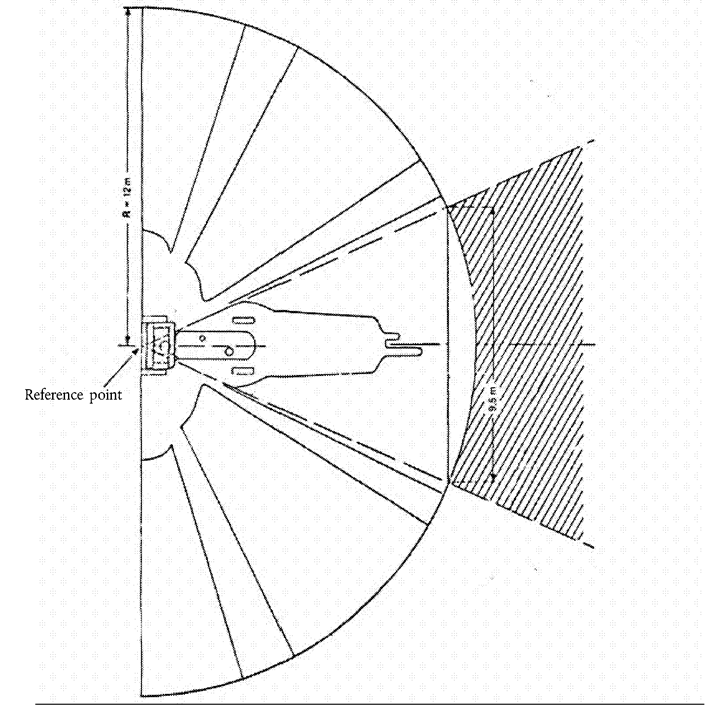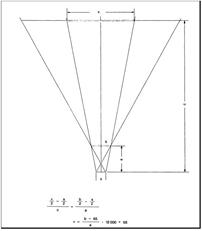- Latest available (Revised)
- Original (As adopted by EU)
Directive 2008/2/EC of the European Parliament and of the Council (repealed)Show full title
Directive 2008/2/EC of the European Parliament and of the Council of 15 January 2008 on the field of vision and windscreen wipers for wheeled agricultural or forestry tractors (Codified version) (Text with EEA relevance) (repealed)
You are here:
- Directives originating from the EU
- 2008 No. 2
- Annexes only
More Resources
This is a legislation item that originated from the EU
After exit day there will be three versions of this legislation to consult for different purposes. The legislation.gov.uk version is the version that applies in the UK. The EU Version currently on EUR-lex is the version that currently applies in the EU i.e you may need this if you operate a business in the EU.
The web archive version is the official version of this legislation item as it stood on exit day before being published to legislation.gov.uk and any subsequent UK changes and effects applied. The web archive also captured associated case law and other language formats from EUR-Lex.
Status:
This is the original version (as it was originally adopted).
ANNEX I
FIELD OF VISIONDEFINITIONS AND REQUIREMENTS
1.DEFINITIONS
1.1.Field of vision
‘Field of vision’ means all forward and lateral directions in which the driver of the tractor can see.
1.2.Reference point
‘Reference point’ means the position, fixed by convention, of the tractor driver's eyes notionally located at a single point. The reference point is situated in the plane parallel to the longitudinal median plane of the tractor and passing through the centre of the seat, 700 mm vertically above the line of intersection of that plane and the surface of the seat and 270 mm in the direction of the pelvic support from the vertical plane passing through the front edge of the surface of the seat and perpendicular to the longitudinal median plane of the tractor (Figure 1). The reference point thus determined relates to the seat when unoccupied and fitted in the central position specified by the tractor manufacturer.
1.3.Semi-circle of vision
‘Semi-circle of vision’ means the semi-circle described by a radius of 12 m about a point situated in the horizontal plane of the road vertically below the reference point, in such a way that, when facing the direction of motion, the arc of the semi-circle lies in front of the tractor, while the diameter bounding the semi-circle is at right angles to the longitudinal axis of the tractor (Figure 2).
1.4.Masking effect
‘Masking effect’ means the chords of the sectors of the semi-circle of vision which cannot be seen owing to structural components such as roof-pillars, air intakes or exhaust stacks and the frame of the windscreen.
1.5.Sector of vision
‘Sector of vision’ means that part of the field of vision bounded:
at the top,
by a horizontal plane passing through the reference point;
in the plane of the road,
by the zone lying outside the semi-circle of vision, and forming the continuation of the sector of the semi-circle of vision, the chord of which is 9,5 m long, perpendicular to the plane parallel to the longitudinal median plane of the tractor passing through the centre of the driver's seat and bisected by that plane.
1.6.Swept area of the windscreen wipers
‘Swept area of the windscreen wipers’ means the area of the outer surface of the windscreen swept by the windscreen wipers.
2.REQUIREMENTS
2.1.General
The tractor shall be constructed and equipped in such a way that, in road traffic and in farm and forest use, the driver has an adequate field of vision, under all the usual conditions pertaining to highway use and to work undertaken in fields and forests. The field of vision is considered adequate when the driver has, as far as possible, a view of part of each front wheel and when the following requirements are fulfilled.
2.2.Checking of the field of vision
2.2.1.Procedure for determining masking effects
2.2.1.1.The tractor must be placed on a horizontal surface as shown in Figure 2. On a horizontal support level with the reference point, there must be mounted two point sources of light, e.g. 2 × 150 W, 12 V, 65 mm apart and symmetrically located with respect to the reference point. The support must be rotatable at its centre point about a vertical axis passing through the reference point. For the purpose of measuring the masking effects, the support must be so aligned that the line joining the two light sources is perpendicular to the line joining the masking component and the reference point.
The silhouette (deepest shadow) overlaps projected on to the semi-circle of vision by the masking component when the light sources are switched on simultaneously or alternately must be measured in accordance with point 1.4 (Figure 3).
2.2.1.2.Masking effects must not exceed 700 mm.
2.2.1.3.Masking effects due to adjacent structural components over 80 mm in width must be so configured that there is an interval of not less than 2 200 mm — measured as a chord of the semi-circle of vision — between the centres of two masking effects.
2.2.1.4.There may be no more than six masking effects in the semi-circle of vision and no more than two inside the sector of vision defined in point 1.5.
2.2.1.5.Outside the sector of vision, masking effects exceeding 700 mm but not exceeding 1 500 mm are, however, permissible if the components causing them cannot be redesigned or relocated: on each side there may be a total of either two such masking effects, one not exceeding 700 mm and the other not exceeding 1 500 mm, or two such masking effects, neither exceeding 1 200 mm.
2.2.1.6.Blind spots caused by type-approved rear-view mirrors may be disregarded if the design of these mirrors is such that they cannot be installed in any other way.
2.2.2.Mathematical determination of masking effects for binocular vision:
2.2.2.1.as an alternative to the procedure set out in point 2.2.1, the acceptability of individual masking effects can be determined mathematically. The requirements of points 2.2.1.2 to 2.2.1.6 shall apply in respect of the size, distribution and number of the masking effects;
2.2.2.2.for binocular vision with an inter-ocular distance of 65 mm, the masking effect expressed in mm is given by the formula:
in which:
is the distance in millimetres between the component obstructing vision and the reference point measured along the visual radius joining the reference point, the centre of the component and the perimeter of the semi-circle of vision; and
is the width in millimetres of the component obstructing vision measured horizontally and perpendicular to the visual radius.
2.3.The test methods referred to under point 2.2 may be replaced by others if the latter can be shown to be equivalent.
2.4.Transparent area of the windscreen
For the purpose of determining the masking effects in the sector of vision, the masking effects due to the frame of the windscreen and to any other obstacle may, in accordance with the provisions of point 2.2.1.4, be considered as a single effect, provided that the distance between the outermost points of this masking effect does not exceed 700 mm.
2.5.Windscreen wipers
2.5.1.Tractors fitted with windscreens must also be equipped with motor-driven windscreen wipers. The area swept by these wipers must ensure an unobstructed forward view corresponding to a chord of the semi-circle of vision at least 8 m long within the sector of vision.
2.5.2.The rate of operation of the windscreen wipers must be at least 20 cycles per minute.
ANNEX II
PART A
Repealed Directive with its successive amendments (referred to in Article 6)
| Council Directive 74/347/EEC | |
| Commission Directive 79/1073/EEC | |
| Council Directive 82/890/EEC | Only as regards the references to Directive 74/347/EEC in Article 1(1) |
| Directive 97/54/EC of the European Parliament and of the Council | Only as regards the references to Directive 74/347/EEC in the first indent of Article 1 |
PART B
List of time-limits for transposition into national law and application (referred to in Article 6)
| a In compliance with Article 3a, inserted by point 2 of Article 1 of Directive 79/1073/EEC: 1.With effect from 1 May 1980 no Member State may, on grounds relating to the field of vision of tractors:
if the field of vision of this type of tractor or of these tractors complies with the provisions of this Directive. 2.With effect from 1 October 1980 Member States:
3.With effect from 1 January 1983, Member States may prohibit the entry into service of any tractor whose field of vision does not comply with the provisions of this Directive.” | ||
| Directive | Time-limit for transposition | Date of application |
|---|---|---|
| 74/347/EEC | 2 January 1976a | |
| 79/1073/EEC | 30 April 1980 | |
| 82/890/EEC | 22 June 1984 | |
| 97/54/EC | 22 September 1998 | 23 September 1998 |
ANNEX III
CORRELATION TABLE
| Directive 74/347/EEC | This Directive |
|---|---|
| Articles 1 to 3 | Articles 1 to 3 |
| Article 3a | Table note (*), Annex II |
| Article 4 | Article 4 |
| Article 5(1) | — |
| Article 5(2) | Article 5 |
| — | Articles 6 and 7 |
| Article 6 | Article 8 |
| Annex | Annex I |
| Annex, points 1 to 2.3 | Annex I, points 1 to 2.3 |
| Annex, point 2.4 | — |
| Annex, point 2.5 | Annex I, point 2.4 |
| Annex, point 2.6 | Annex I, point 2.5 |
| Annex, figures 1, 2 and 3 | Annex I, figures 1, 2 and 3 |
| — | Annex II |
| — | Annex III |
Options/Help
Print Options
PrintThe Whole Directive
PrintThe Annexes only
Legislation is available in different versions:
Latest Available (revised):The latest available updated version of the legislation incorporating changes made by subsequent legislation and applied by our editorial team. Changes we have not yet applied to the text, can be found in the ‘Changes to Legislation’ area.
Original (As adopted by EU): The original version of the legislation as it stood when it was first adopted in the EU. No changes have been applied to the text.
More Resources
Access essential accompanying documents and information for this legislation item from this tab. Dependent on the legislation item being viewed this may include:
- the original print PDF of the as adopted version that was used for the EU Official Journal
- lists of changes made by and/or affecting this legislation item
- all formats of all associated documents
- correction slips
- links to related legislation and further information resources
More Resources
Use this menu to access essential accompanying documents and information for this legislation item. Dependent on the legislation item being viewed this may include:
- the original print PDF of the as adopted version that was used for the print copy
- correction slips
Click 'View More' or select 'More Resources' tab for additional information including:
- lists of changes made by and/or affecting this legislation item
- confers power and blanket amendment details
- all formats of all associated documents
- links to related legislation and further information resources




